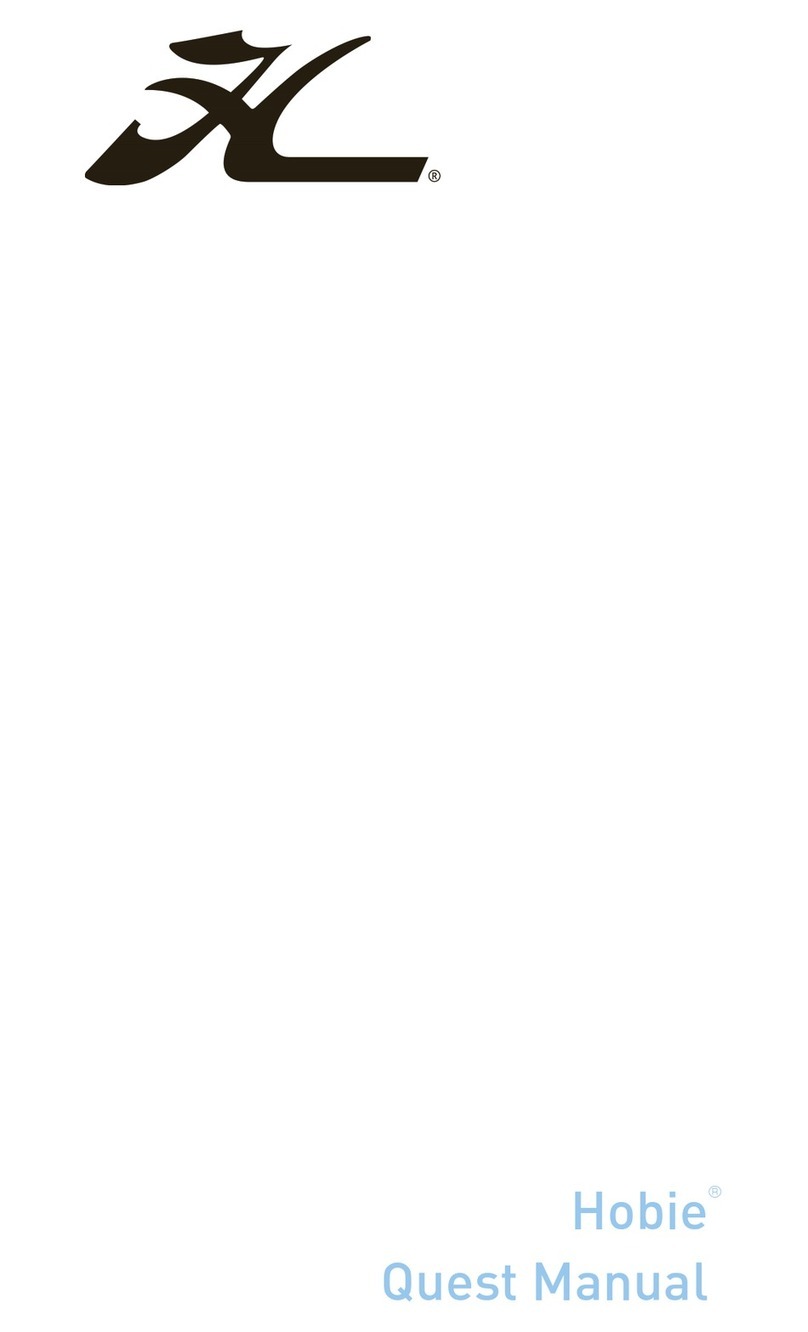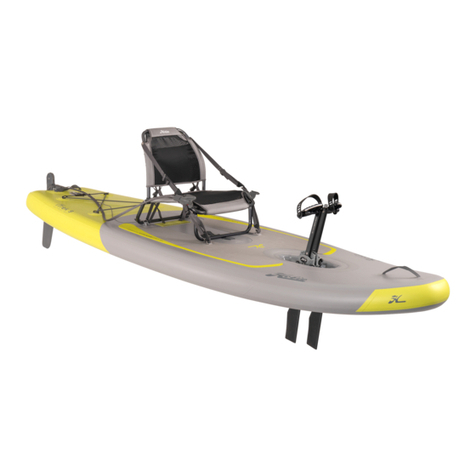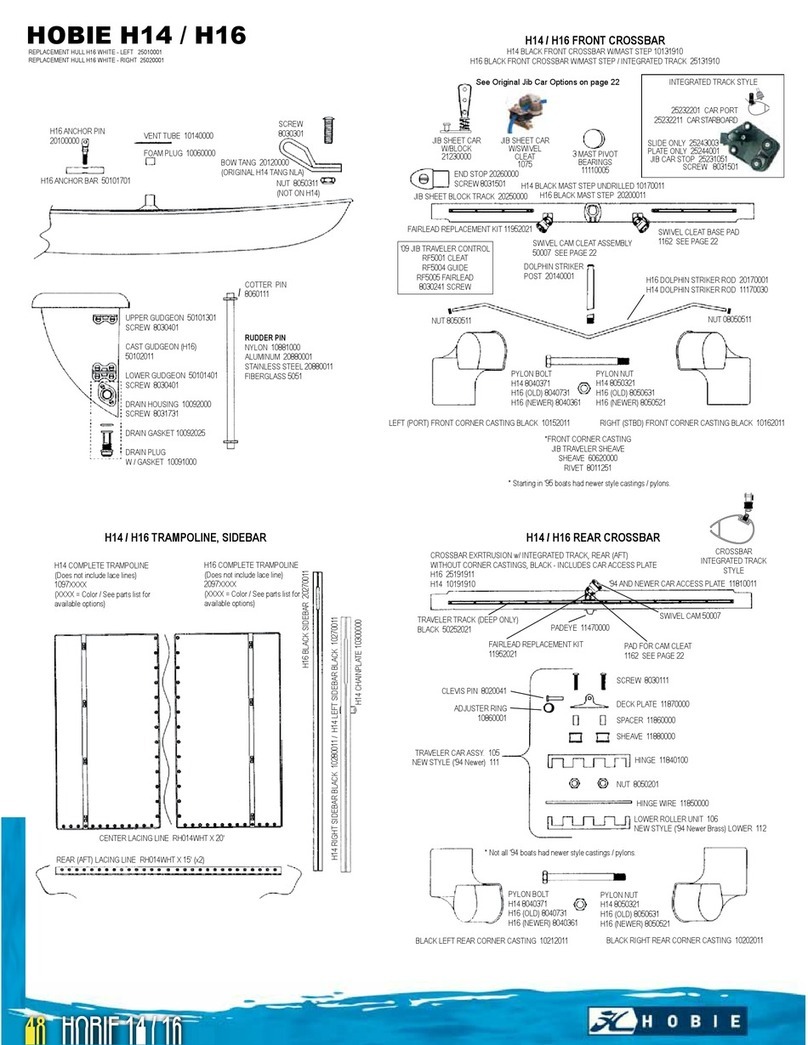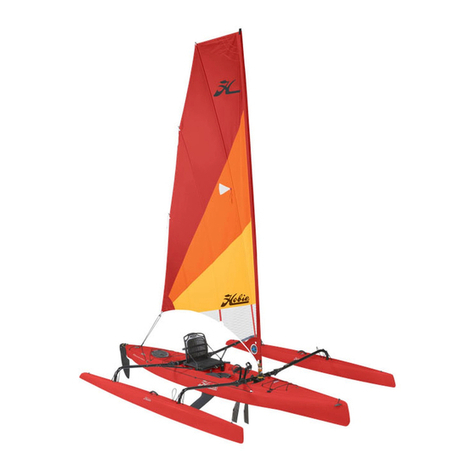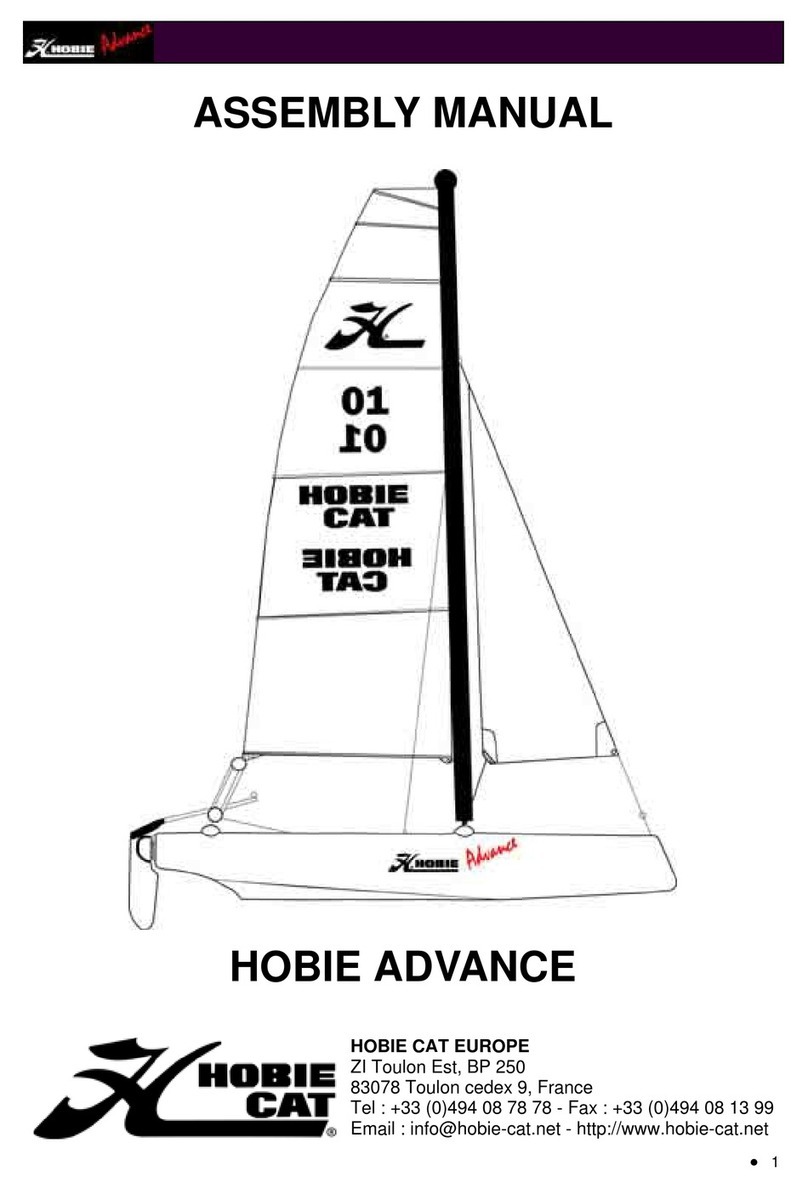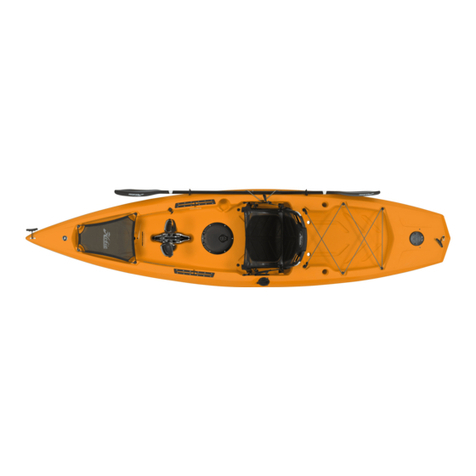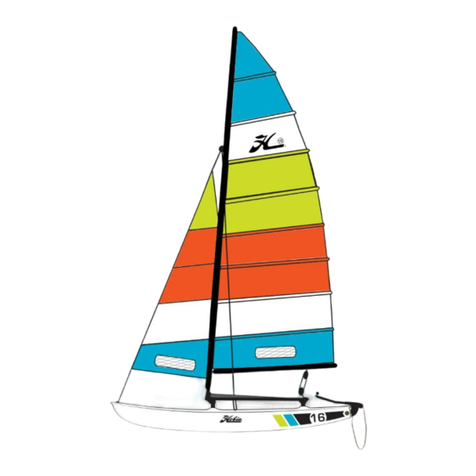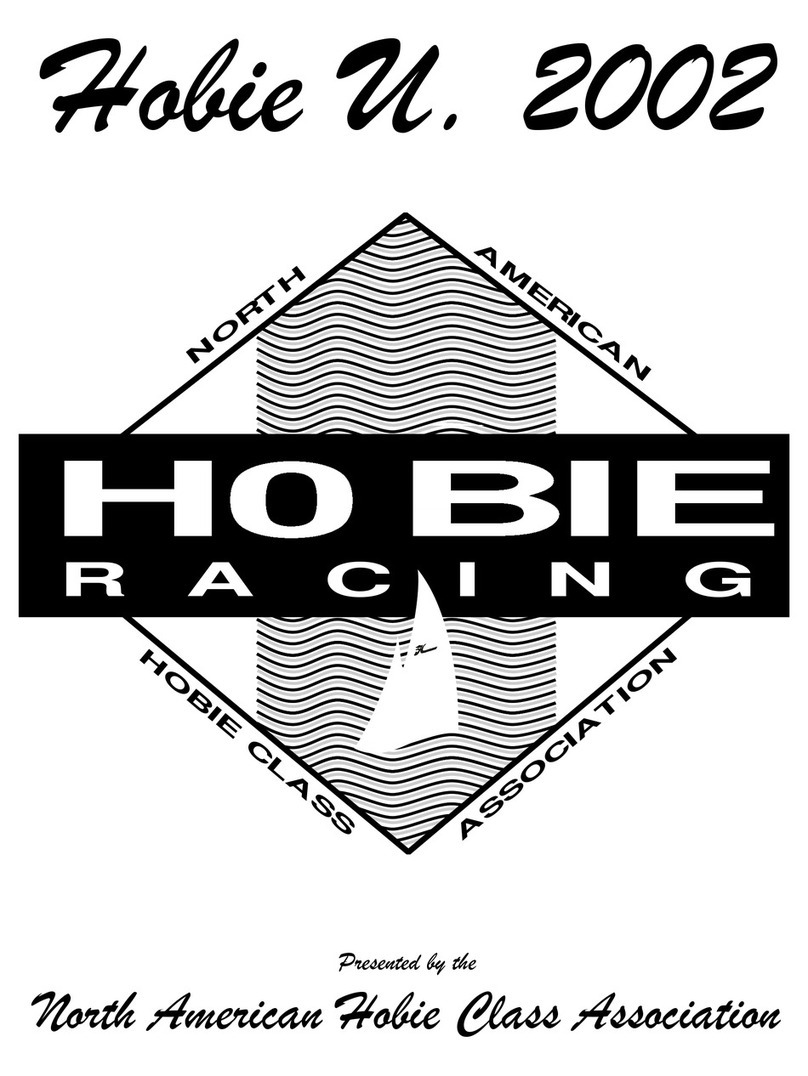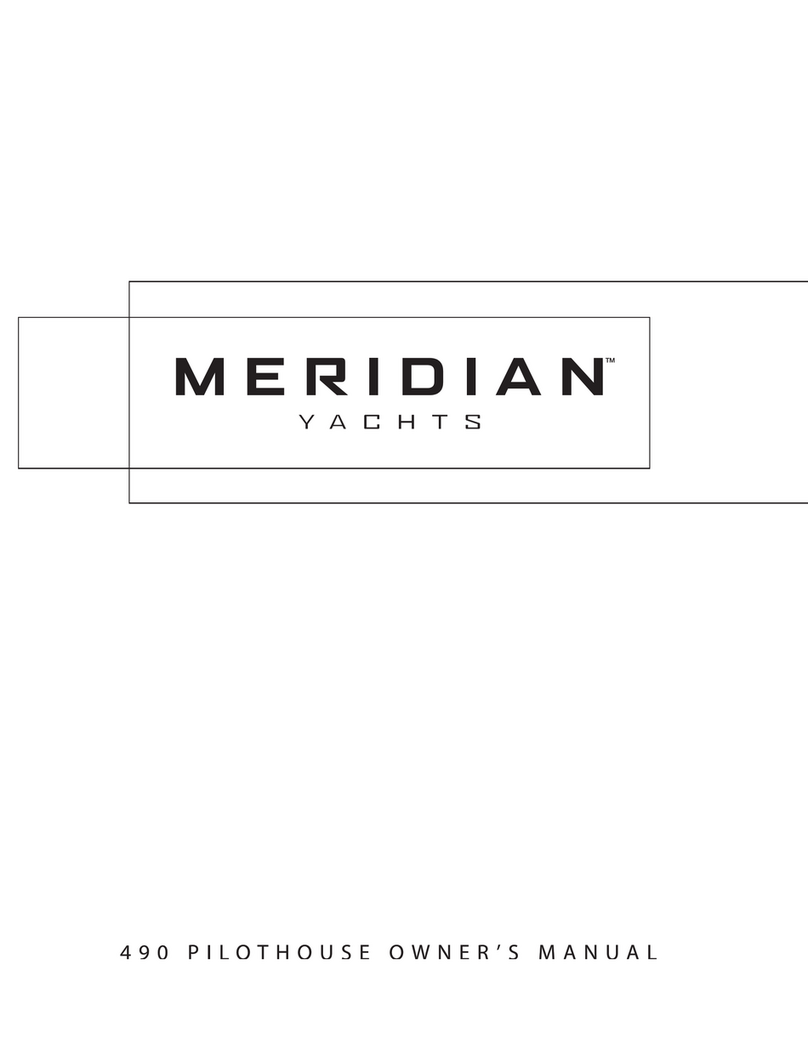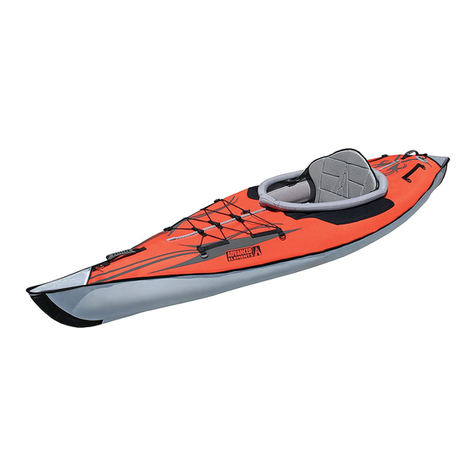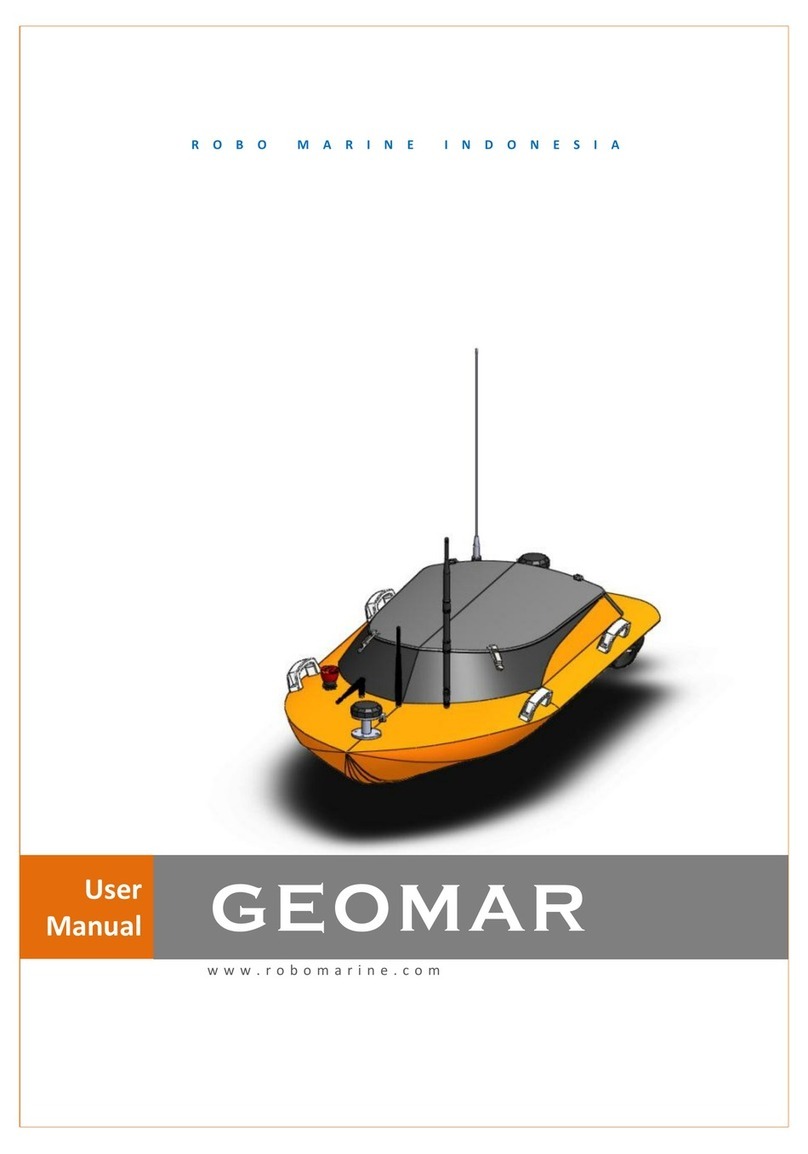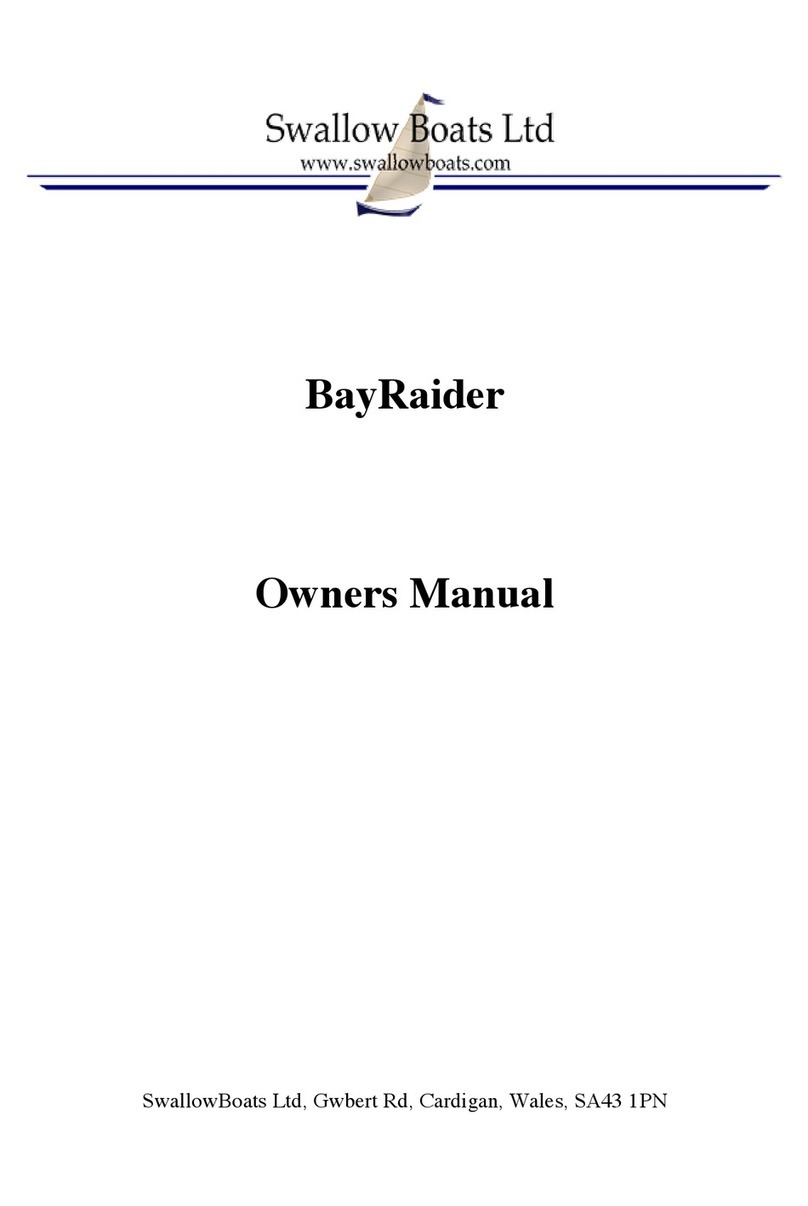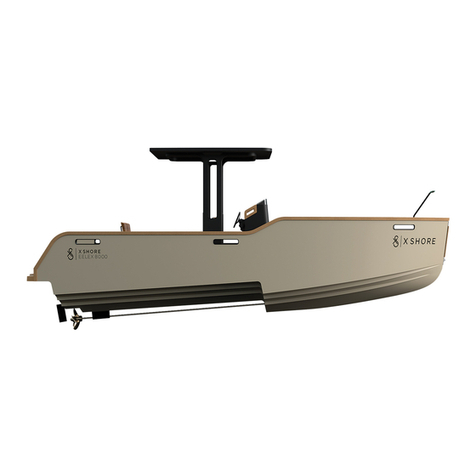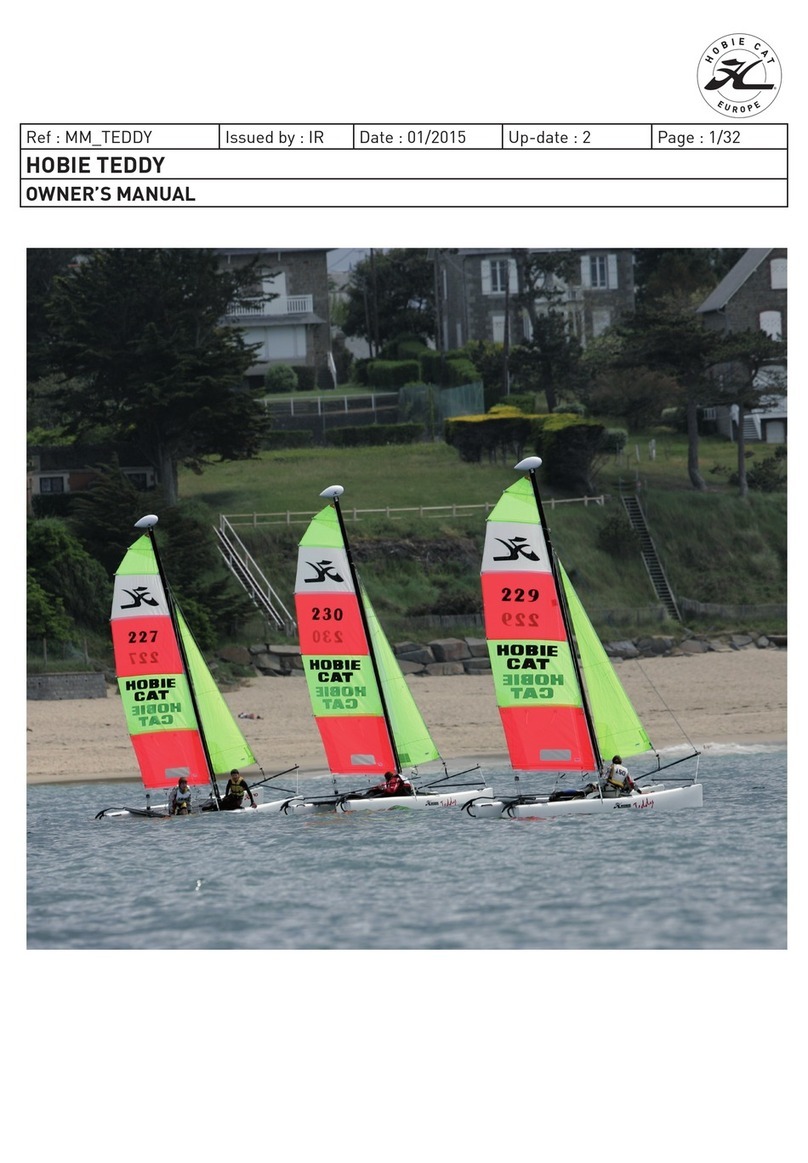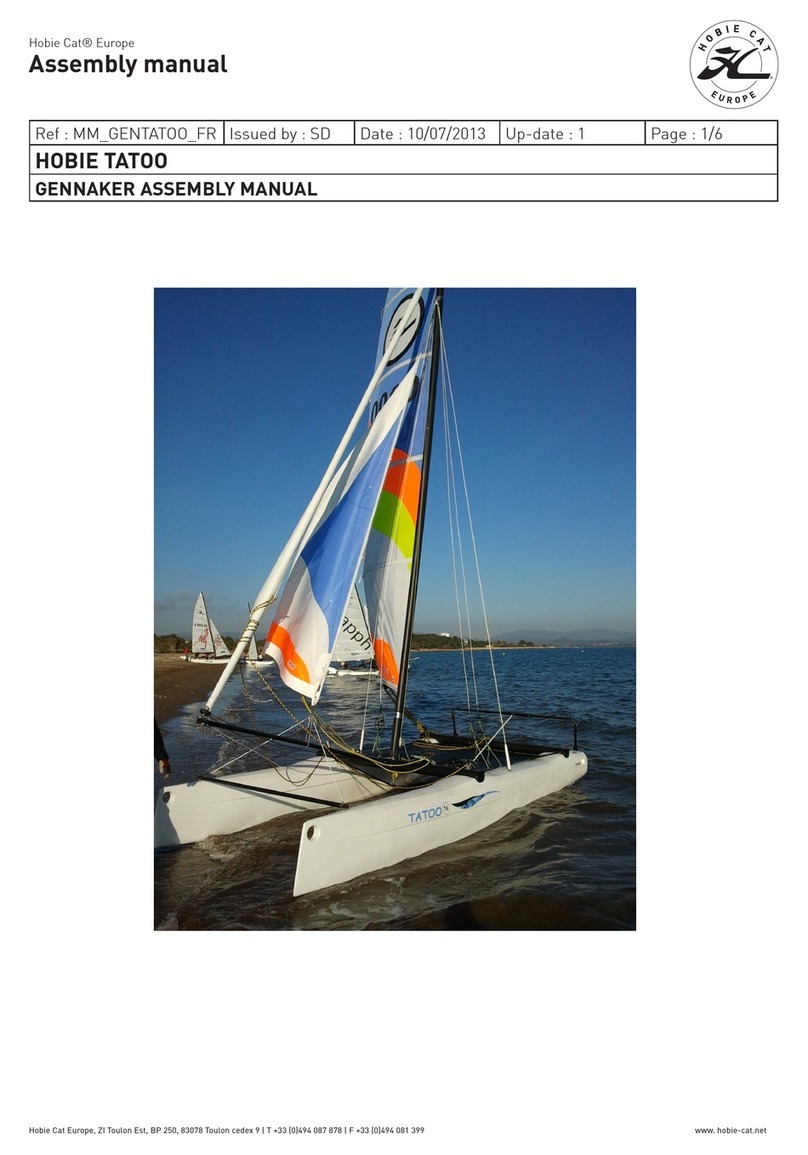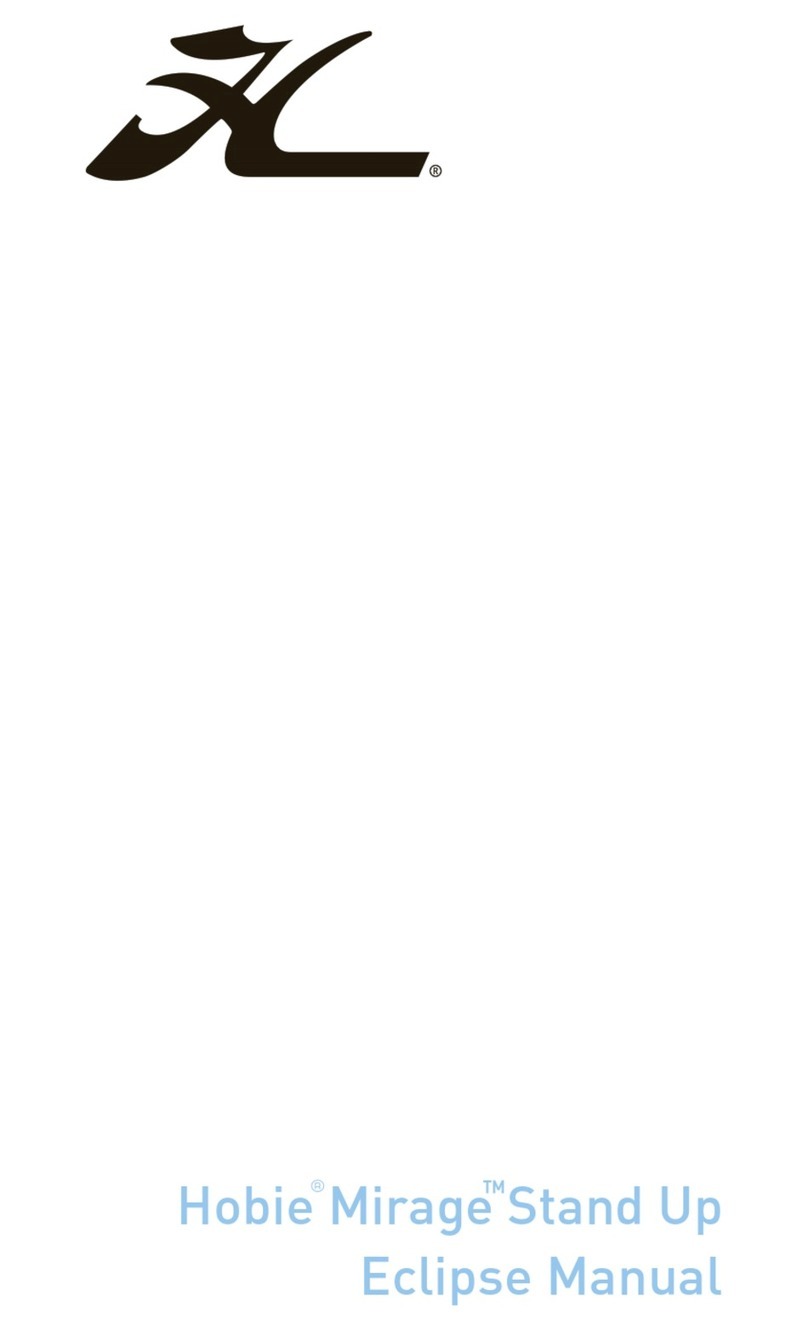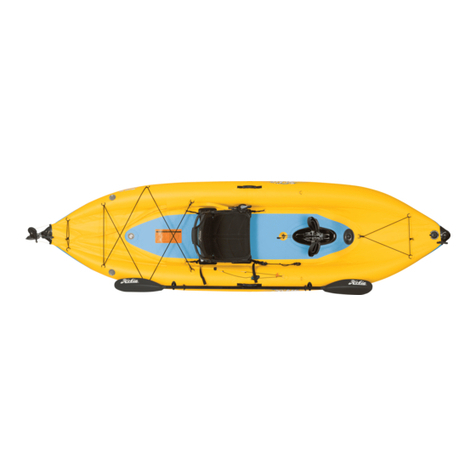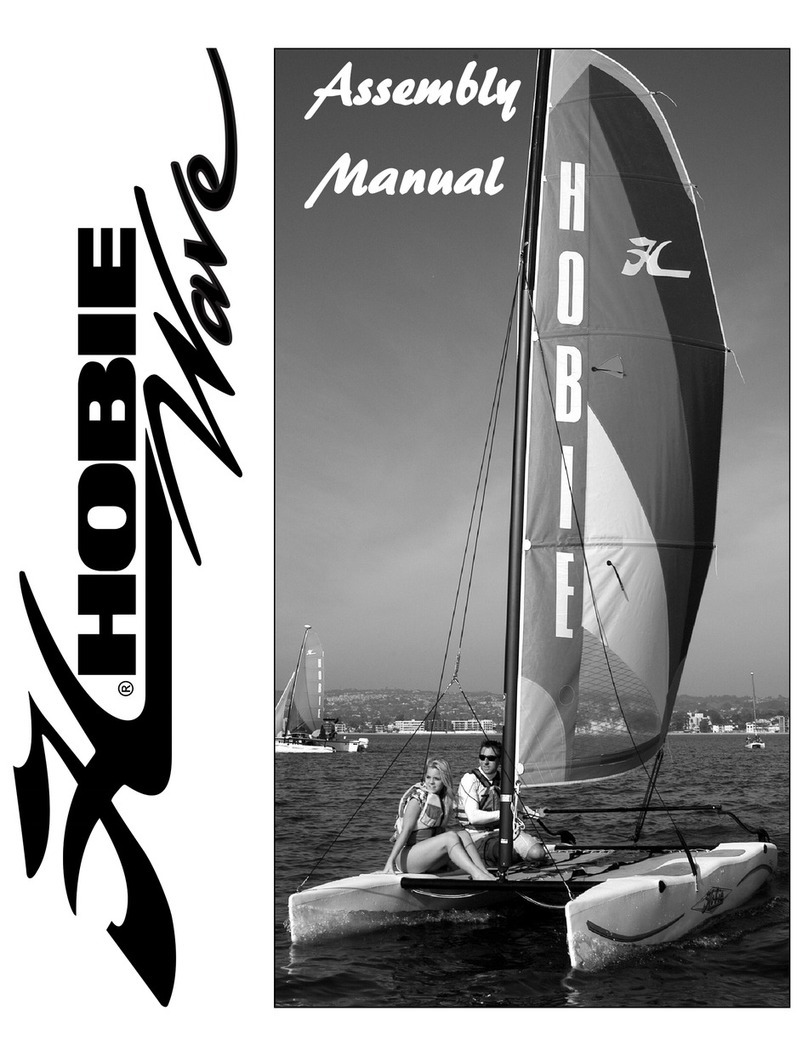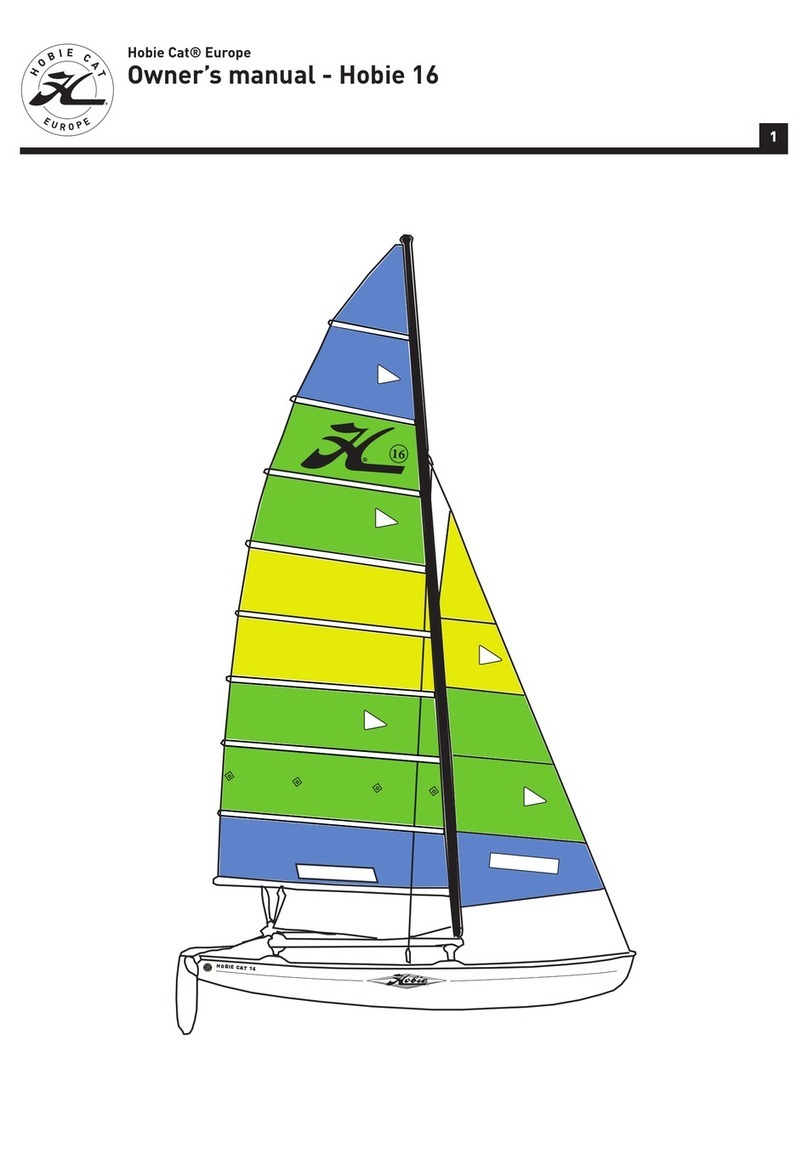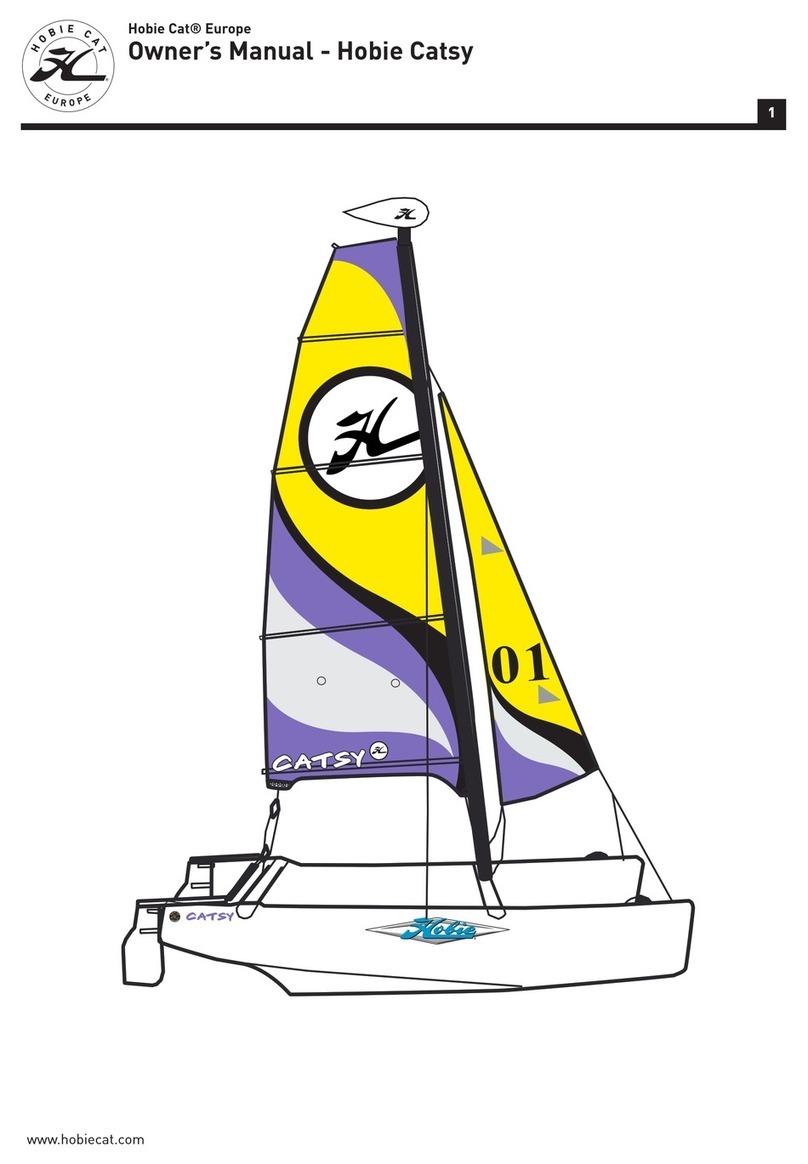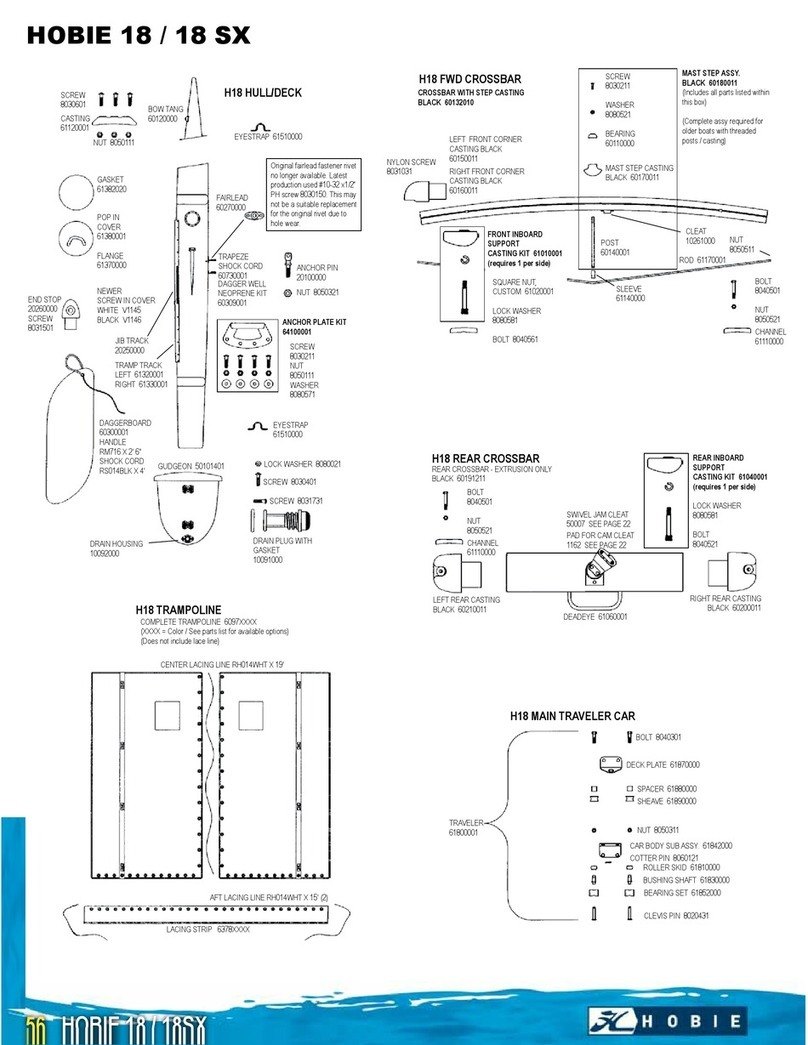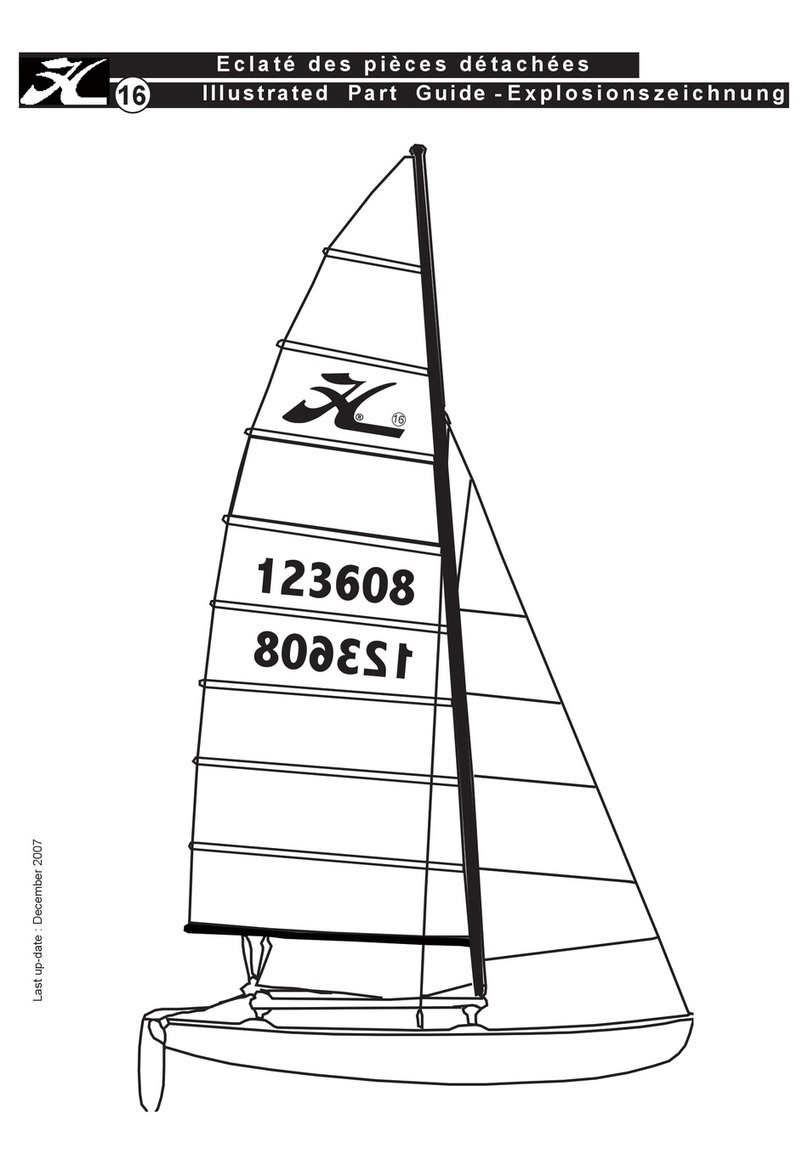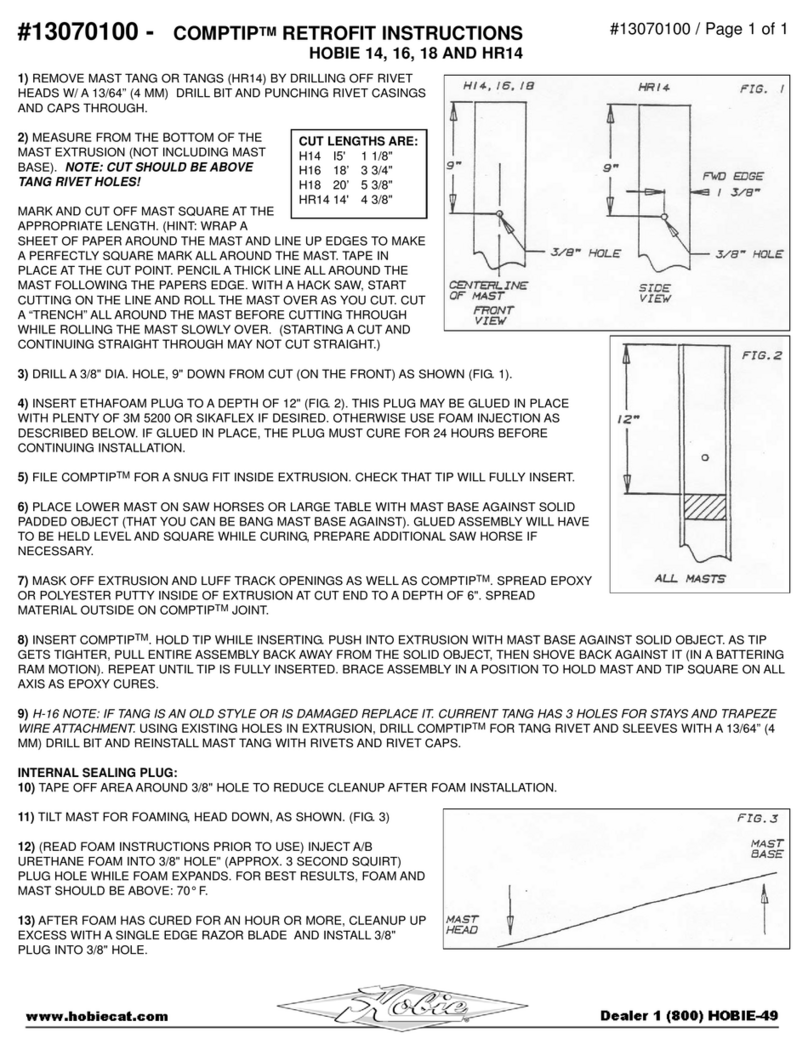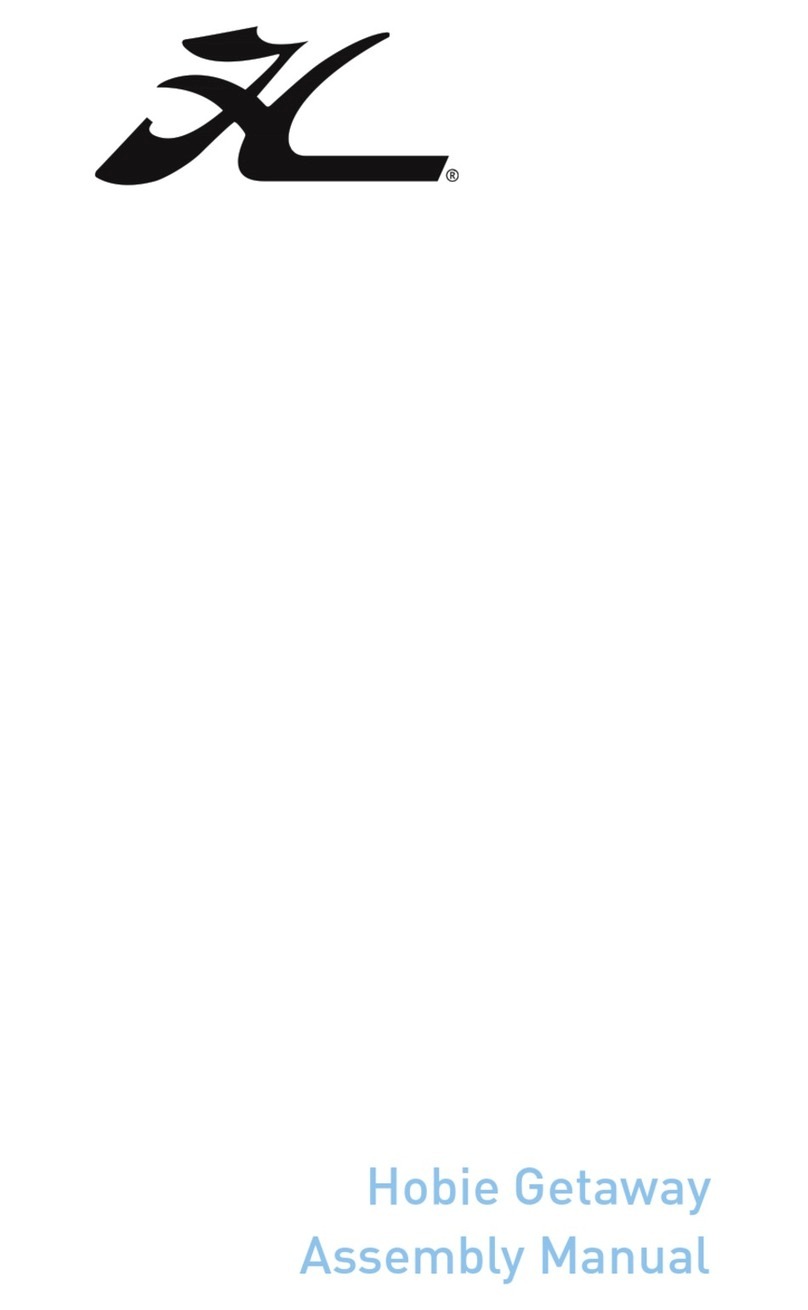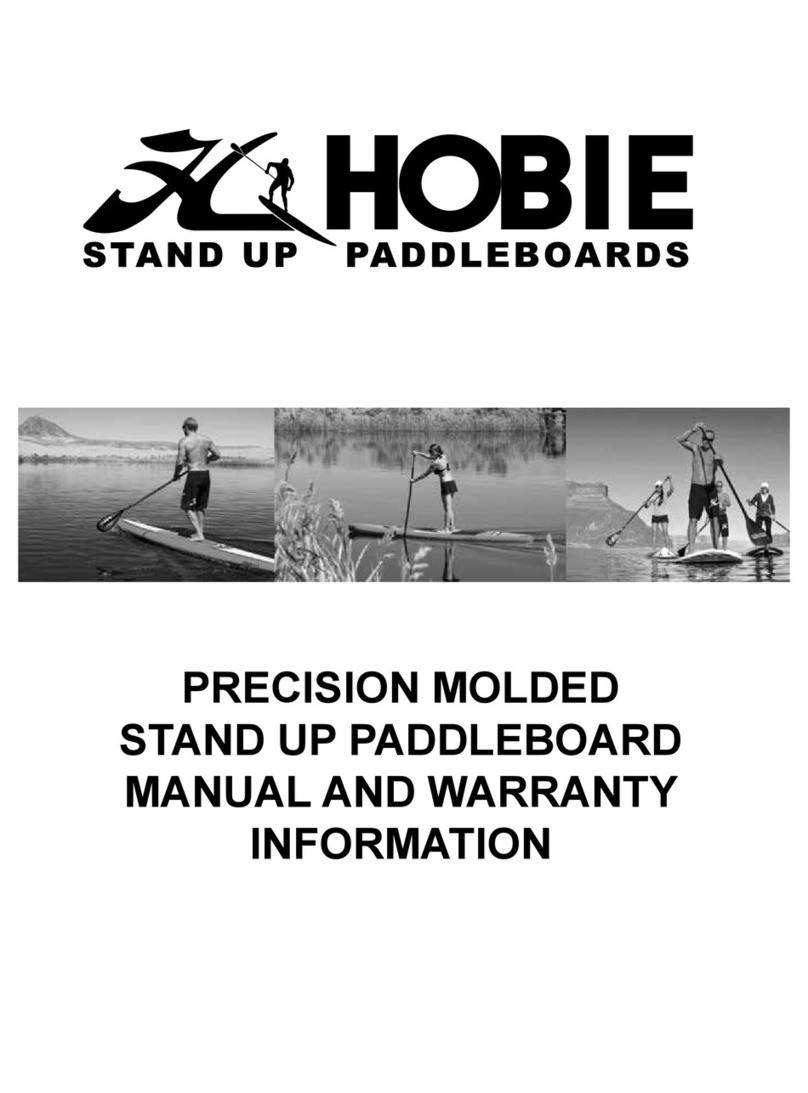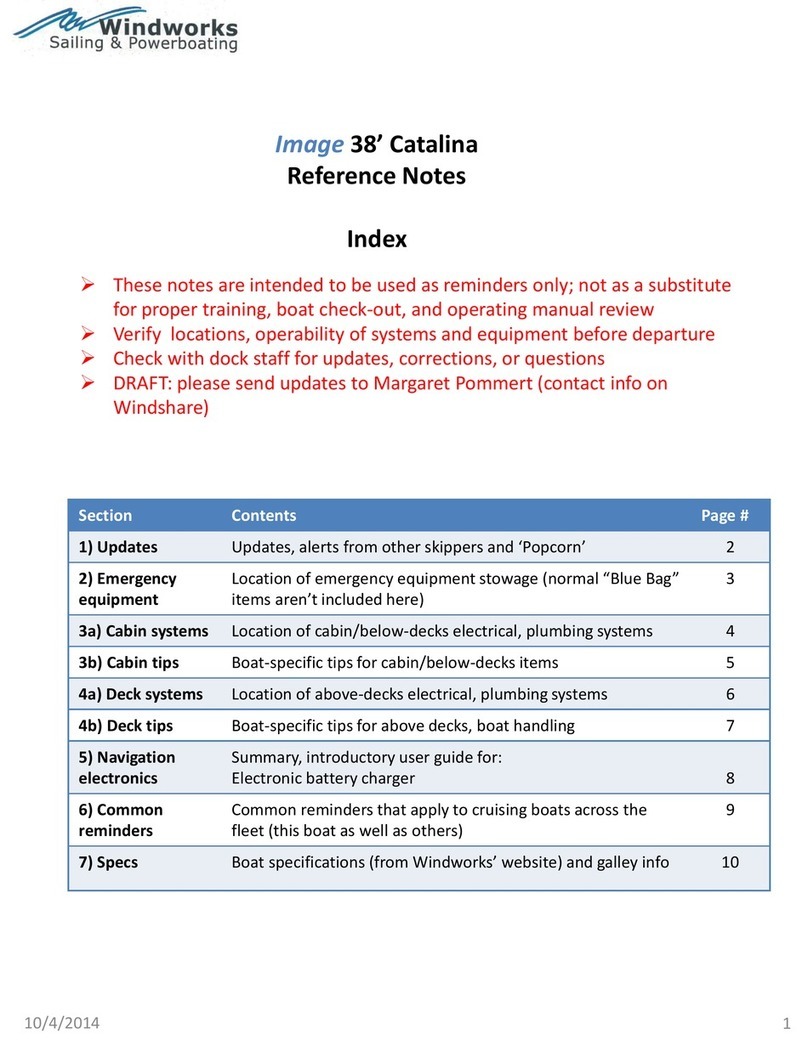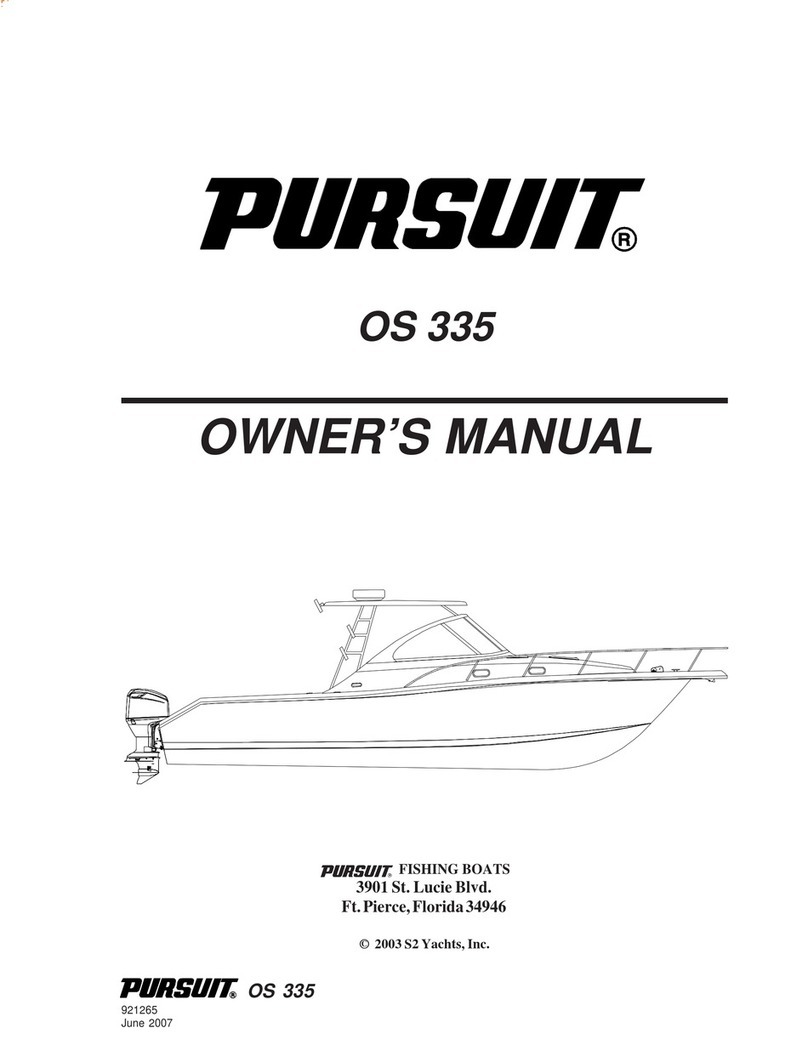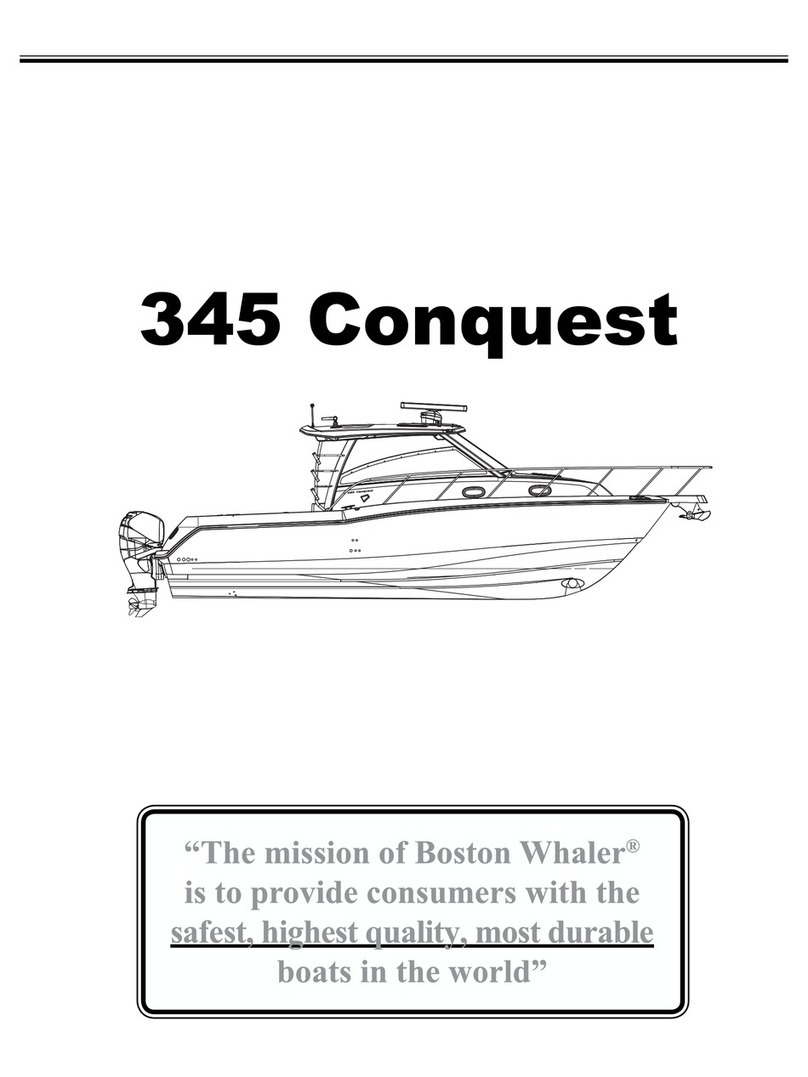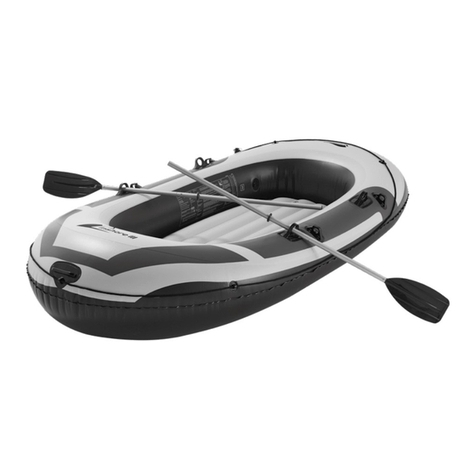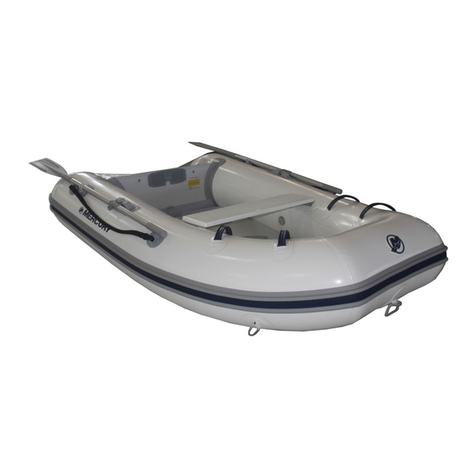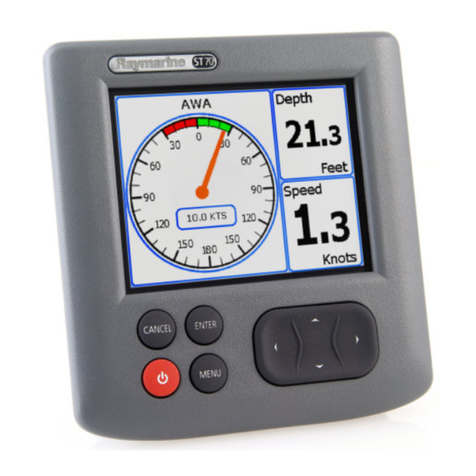10
1. Unroll the diamond wi-
res. Attach the joint end of
the diamond wires onto the
turnbuckle adjuster near the
base of the mast (level with
the security sticker) using the
pin and split ring.
Take the loose ends of the
diamond wires and hold tight
to adjust to the same length,
using the turnbuckle adjus-
ter which is located on the
lower section of one of the
wires. Once they are the same
length, attach the two wires
to the shield plaes situated on
each side of the mast under
the mast tang.
2. Assemble the spreaders on the
centre of the mast. The spreader
root attaches to the front of the
mast section onto the one-piece
stainless steel strap. The sprea-
der rake adjuster barrel attaches
on each side to the individual
fittings on both sides of the mast
nearer the sail track. To adjust
the spreader rake, adjust the
length of the barrel (by winding
in or out) and measure from the
wire positions at the tips of each
spreader.
3. Slide the diamond Wires into the corresponding
slots at the end of the spreaders. Ensure the black
plastic roller is above the spreader arm. It may be
necessary to release tension from the diamond wire
turnbuckle adjuster near the base of the mast. Secure
the diamond wire with the thin wire supplied. Pass
the wire through the small hole near the spreader tip,
bend the wire and on one side of the spreader turn the
wire around the thicker diamond wires two or three
times. Do the same for the other side of the spreader.
Cut off the excess thin wire ensuring it is bent neatly
onto the diamond wires as to prevent the wire from
tearing the sails. Once secured, tape over the sprea-
der tips to further ensure there are no sharp edges.
Caution : do not try to adjust
spreader rake while diamond
wires are tensioned. Only adjust
under no diamond wire tension
and screwing the barrel by hand.
Spreader Bars
